Schnitzel is a traditional German dish where meat is pounded out thin, breaded, and fried. The breading is very simple, but creates a wonderfully crunchy shell around the meat. Schnitzel is best enjoyed fresh and hot from the pan. This recipe comes from my Granny who is a first generation US Citizen. Her parents immigrated from Germany to the United States before the war. While I call it Granny’s German Schnitzel, the recipe was passed down to her from her own mother, born and raised in Hamburg, who got it from her mother.
Why Our Recipe
- Lemon juice is added directly to the egg mixture rather than just squeezed on top.
- Original recipe passed down for generations from my great-grandparents.
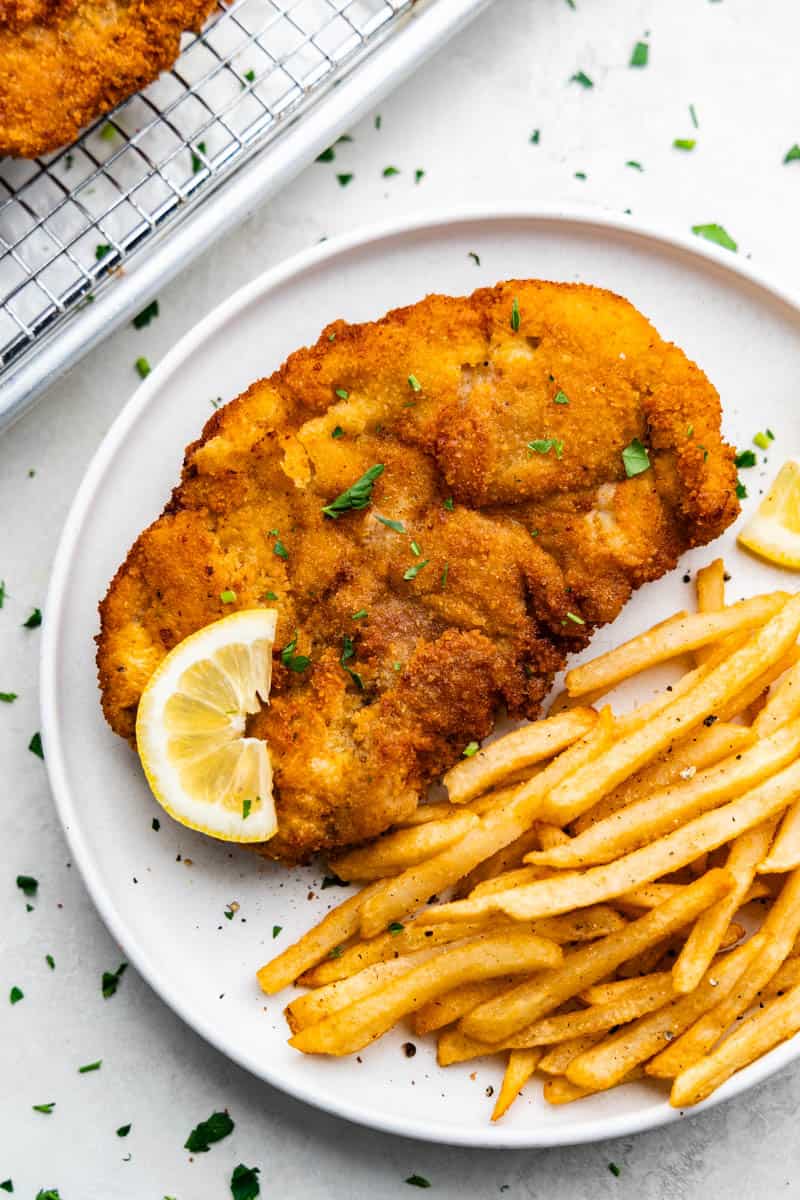
Schnitzel is a cooking method from Viennese cuisine where a thin meat is breaded and fried. Their famous creation is made with veal and is known as Weinerschnitzel. The popular dish spread throughout the Austro-Hungarian Empire and into the Prussian Empire. In Germany, the dish was made with pork cutlets rather than veal, hence the name schweineschnitzel which translates to simply “Pork Schnitzel.” In modern-day Germany, it’s simply known as schnitzel and can be found all over the country.
Ingredient Notes
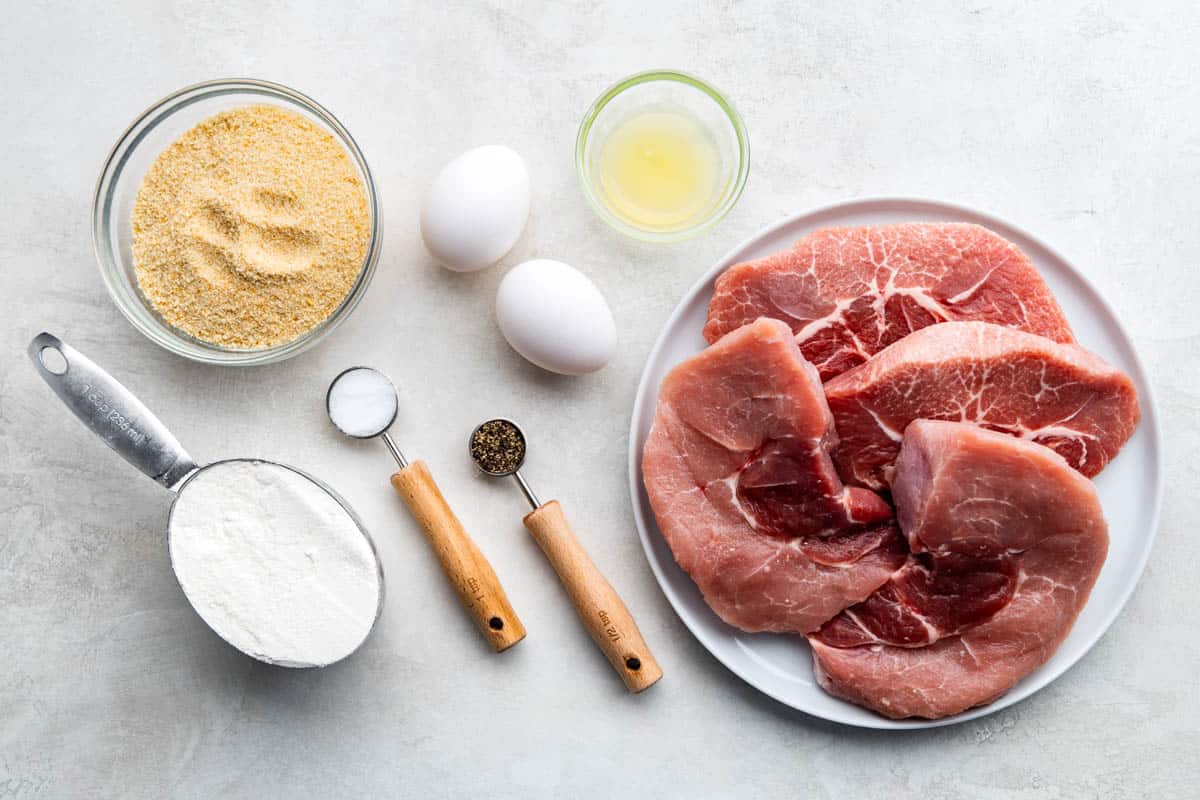
- Pork: use a boneless pork chop of any cut, including pork cutlets.
- Eggs: used as a binding agent for the crispy coating.
- Lemon Juice: while often squeezed on top of the fried chop, we add ours directly into the crispy coating.
- Flour: use all-purpose flour for a traditional crunchy coating, or mix or replace with cornstarch for extra crispiness.
- Bread Crumbs: provides the schnitzel coating that distinguishes this dish from other thin fried meats.
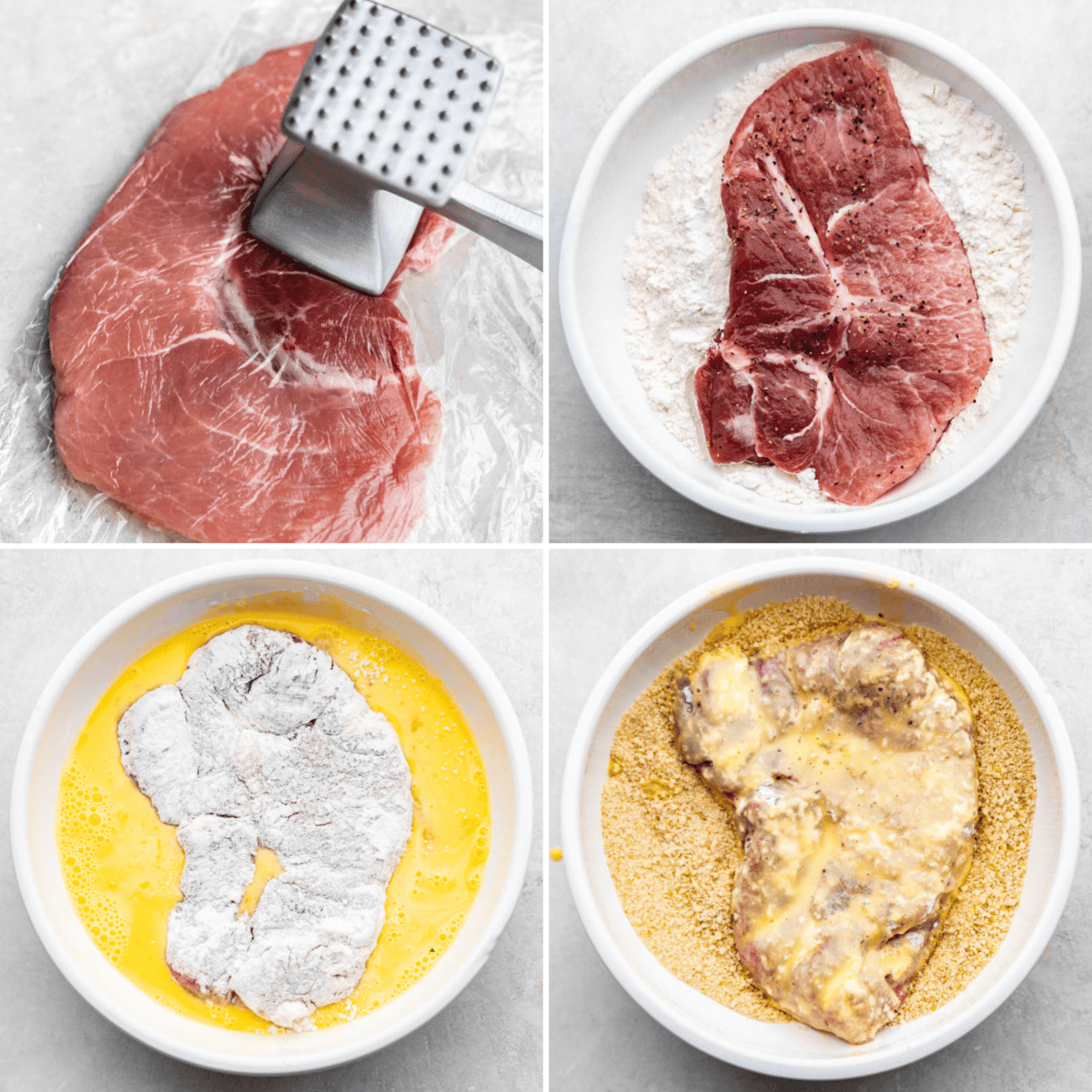
Schnitzel Varieties
The “Wiener Schnitzel,” made from veal, is one of the most renowned types of schnitzel. The name derives from the German word “Wien,” signifying “Vienna,” pointing to its origins in the Austrian capital.
Schnitzels aren’t limited to just veal or pork. Varieties using other meats like chicken, turkey, or lamb are also beloved. These are often named by combining “schnitzel” with the specific meat source, leading to names like “Hähnchen-Schnitzel” for chicken schnitzel or “Lamm-Schnitzel” for lamb schnitzel.
Jägerschnitzel Mushroom Gravy
Schnitzel is often eaten plain with just a bit of freshly squeezed lemon juice, but can also be served with a creamy mushroom gravy which is known as Jägerschnitzel. To make the sauce you’ll need:
- 2 tablespoons butter
- 8 ounces finely chopped mushrooms
- 2 tablespoons flour
- 1 cup chicken broth
- 1 cup milk
- Melt butter in a medium saucepan over medium-high heat.
- Add the mushrooms to the pan and cook until softened and browned, about 5 minutes.
- Sprinkle the flour over the mushrooms and stir to coat them evenly.
- Slowly pour in the chicken broth and milk, stirring constantly to prevent lumps from forming.
- Increase the heat to high and bring the gravy to a boil. Then, reduce heat to low and simmer until the gravy has thickened to your desired consistency, about 2 to 3 minutes.
- Serve the mushroom gravy over schnitzel. Enjoy!
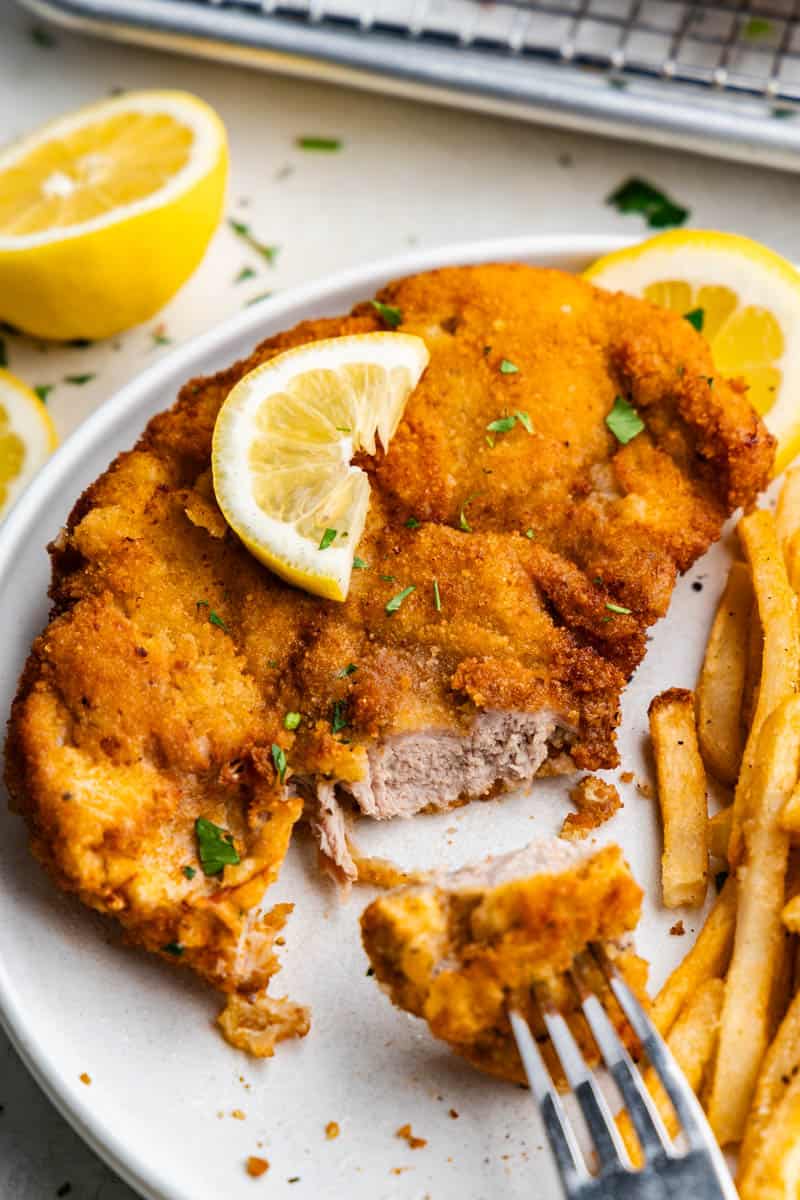
Storage & Reheating Instructions
Refrigerate any leftovers in an airtight container. The USDA recommends that cooked pork be eaten within 3 to 4 days.
Reheating in the oven is the preferred method for leftover chops as the chops will retain more moisture this way, and the coating can crisp. Place on a baking sheet and bake in a 350-degree oven until the pork reaches an internal temperature of 145 degrees F. Begin checking the temperature after 15 minutes as reheating times may vary.
Side dishes to serve with Schnitzel
Watch the video below where Rachel will walk you through every step of this recipe. Sometimes it helps to have a visual, and we’ve always got you covered with our cooking show. You can find the complete collection of recipes on YouTube, Facebook Watch, or our Facebook Page, or right here on our website with their corresponding recipes.

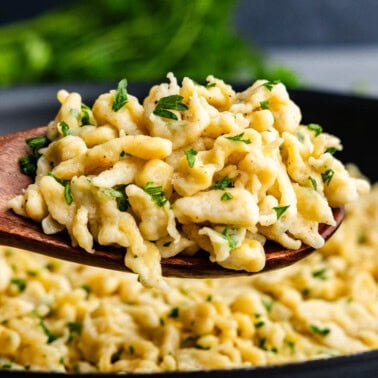
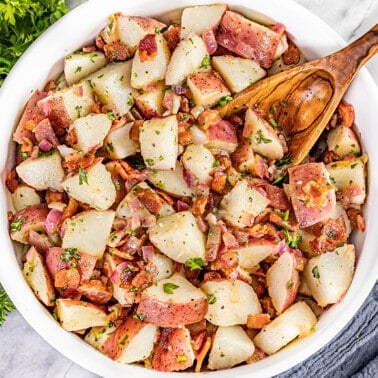
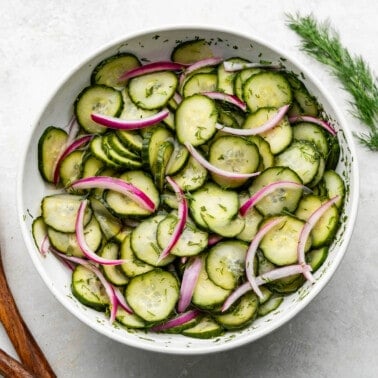
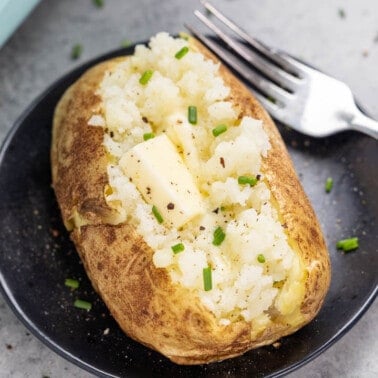
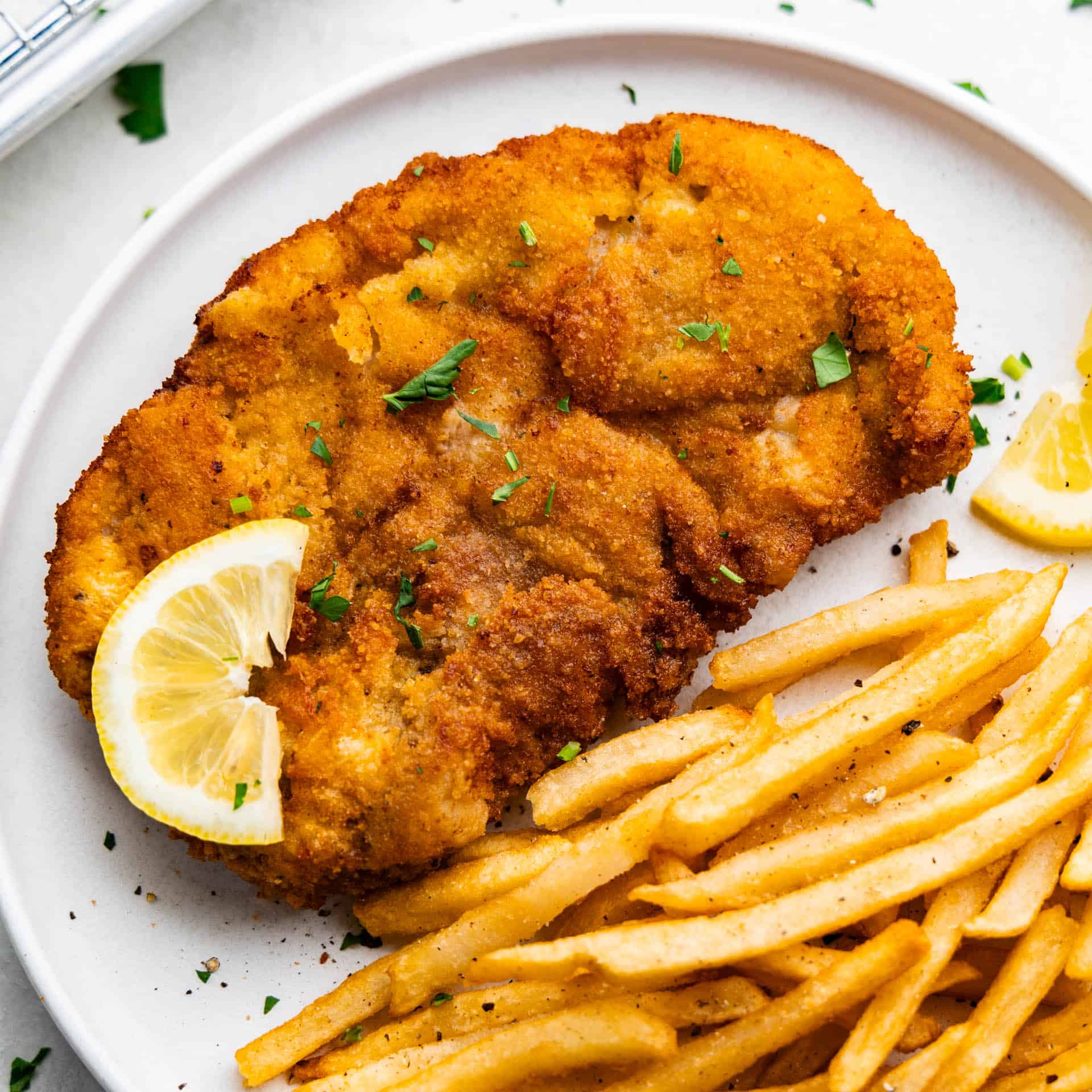
I tried 4 different recipes using one pack of the same cut of pork, on the same day: this recipe, a tempura recipe, a garlic parmesan recipe and a Caribbean jerk recipe.
I must say, this Granny’s German Schnitzel recipe is/was the best of the 4. I have shied away from cooking pork as it always comes out tough, but this recipe had the most tender pork. I wonder if the lemon in the egg helped.
Looks so good. Haven’t had since returning from Germany.
Hi, can I use beef meat instead of pork ?
You can use beef top round or eye of round for schnitzel. These cuts are lean and easy to pound thin, making them perfect for this recipe!
The crunch is so delicious! Made the gravy too! My family loved it!
It was delicious! Easy directions
Served with spazel and the mushroom gravy
Will be making again
I make these all time. Having Lu ed in German
For 13 yrs. And 3 years before that when
Y husband was in the Army. 3 yrs in Heidelberg
And the last 13 yrs in Wiesbaden. I learned to cook Schnitzel by a German lady the first time we were in Heidelberg.. so easy and delicious.
I make it like you. Yummy.
I also lived in northern Italy, so many marvelous cooks. Sonce the war, there was a lot of German/ Italian families that lived there. I ate every Thursday at a small restaurant that was below the apartment that I rented. A lady served this, with sauerkraut, fried potatoes and it was the perfect meal. I learned to cook while living there. I grew to love the mixture of Italian and German foods
First time making this recipe. So easy and delicious. A repeat in my house.
BEST I’VE EVER HAD!!!
This was absolutely delicious! My family is not big pork lovers, but everyone loved it and said to make again!